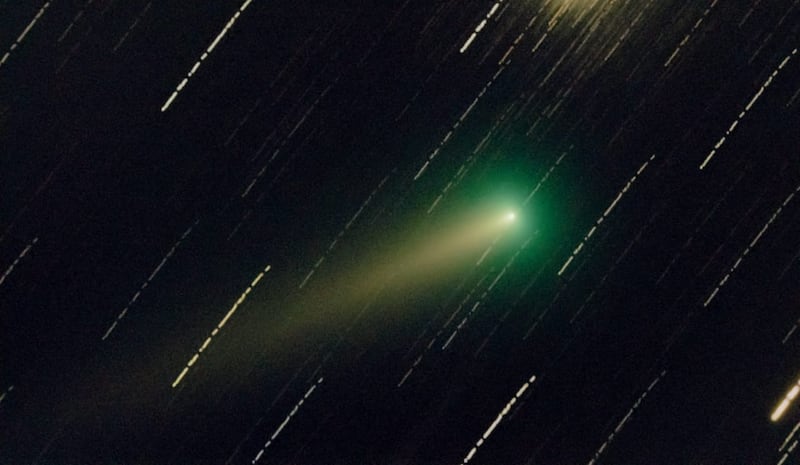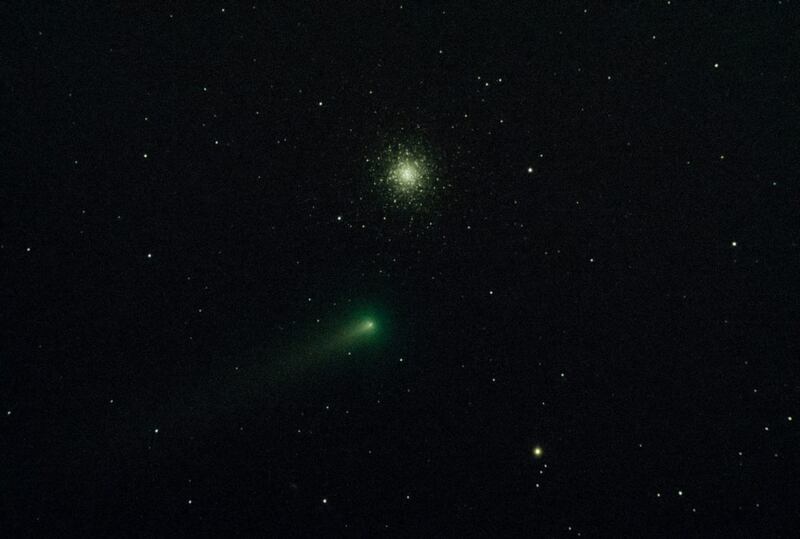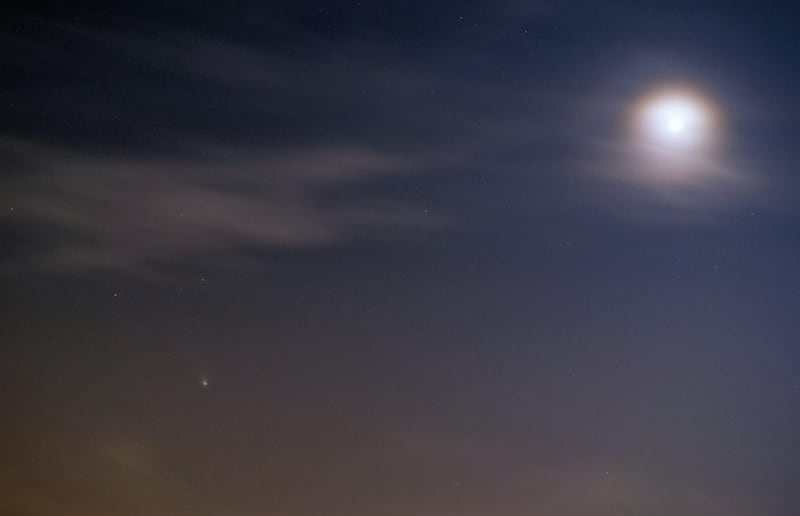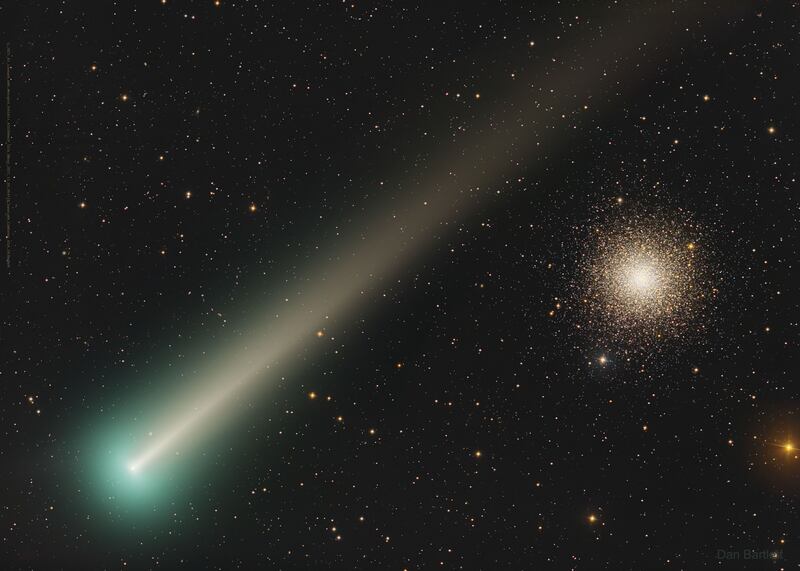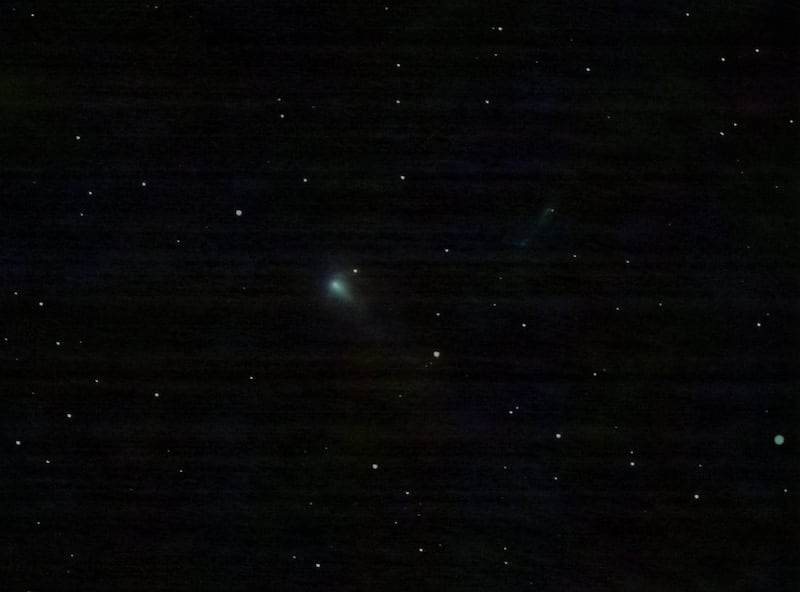A bright green comet making a rare approach towards Earth was spotted streaking across Abu Dhabi skies on Saturday.
Observing the space rock, named Comet Leonard, is a once-in-a-lifetime opportunity in December, as it will never be seen from Earth again.
The comet has also been called the “Christmas comet” because it is visiting during December and reached its brightest point just days before December 25. An astronomer at Arizona’s Mount Lemmon Observatory discovered the celestial object in January 2021.
Aldrin Gabuya, a resident astronomer at the Al Sadeem Observatory in Abu Dhabi, captured the comet from the Al Wathba district soon after sunset on December 17.
“On Saturday, the comet flew by Venus and was visible in the skies of the northern and southern hemispheres,” he told The National.
“After sunset, we can use Venus as a guide to find the comet. It will sweep past a few degrees to the west or south-west of Venus.
“The visibility of the comet is after sunset, around 6.30pm to 7.30pm. Make sure you have a clear south-west horizon, and are free of any obstruction, cloud, haze and light pollution.
“Comet Leonard is not easily found with the naked eye alone. The observer needs an optical aid such as binoculars or a small telescope to see it.”
He said the comet will continue to streak across the south-western dusk sky. Online planetariums, such as theskylive.com, or free astronomy software like Stellarium, can be used to track the space rock.
What is a comet?
Comets are “frozen leftovers” of dust, rock and ice from when the solar system was formed, according to Nasa.
They have a glowing head with a tail of dust and gas that stretches for millions of miles. The heat from the Sun causes this.
“We now know that comets are leftovers from the dawn of our solar system around 4.6 billion years ago, and consist mostly of ice coated with dark organic material,” the space agency says on its website.
“They have been referred to as ‘dirty snowballs’. They may yield important clues about the formation of our solar system.
“Comets may have brought water and organic compounds, the building blocks of life, to the early Earth and other parts of the solar system.”
Comet Leonard appeared round, with its tail pointing up.
There are currently more than 3,700 known comets.
Last year, astronomers in the UAE spotted Comet Neowise. The rare space rock will not be visible for another 6,765 years.
